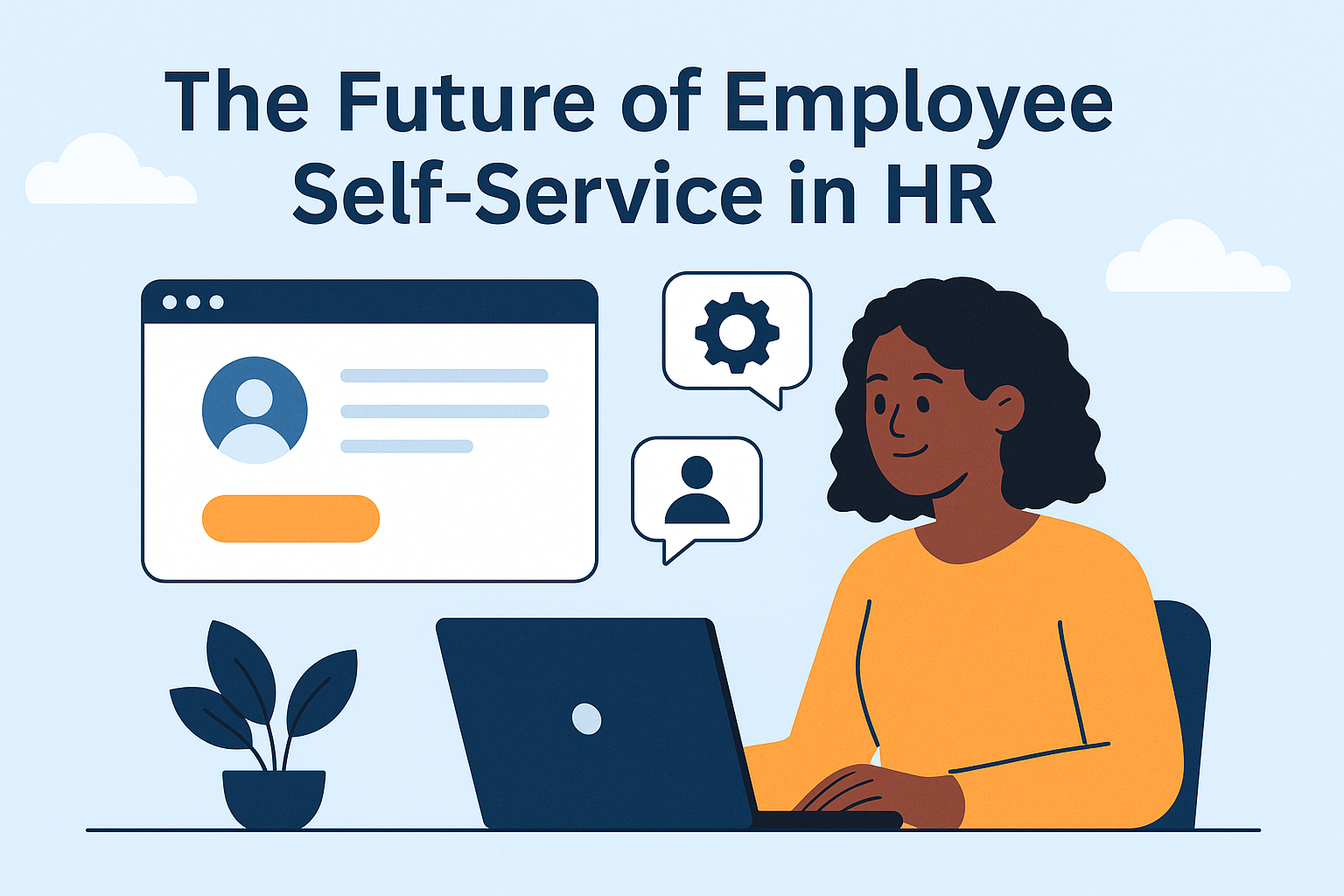The True Cost of Manual HR Workflows
Discover the hidden costs of manual HR processes — from lost time and compliance risks to employee frustration — and learn how automation can



Introduction: The Hidden Price of “The Way We’ve Always Done It”
Every HR professional knows the phrase, “We’ve always done it this way.” It’s often said with pride, as if tradition guarantees reliability. But when it comes to manual HR workflows, “the way we’ve always done it” can quietly drain productivity, budgets, and morale.
At first glance, manual processes seem harmless. Filling forms, updating spreadsheets, collecting signatures — none of it looks expensive. Yet beneath the surface lies a tangle of inefficiency that slows down decision-making and limits HR’s ability to add strategic value.
This isn’t just about time lost. It’s about missed opportunities, compliance risks, and a workforce that’s stuck waiting for approvals instead of doing great work.
Let’s unpack the true cost of manual HR workflows, and how automation isn’t just a convenience — it’s a financial and cultural necessity.
The Myth of “Free” Manual Work
Many organizations assume that manual work is cheaper because it doesn’t require new software or training. But that logic collapses when you measure the hidden costs.
Manual HR processes carry what we can call invisible overhead — time, errors, delays, and disengagement.
A typical HR department spends:
- 25–35% of its time chasing missing information.
- 30% correcting or verifying data entered by hand.
- Up to 10 hours a week managing paper approvals or reconciling files.
Now multiply that across months, departments, and salary costs. Suddenly, manual processing is not free at all — it’s one of the most expensive ways to run HR.
Where Manual Processes Hurt the Most
1. Data Entry and Duplication
Every time an HR team manually inputs employee data, there’s a risk of error. When that data must be re-entered into payroll or benefits systems, the chance of mistakes doubles. A wrong date of birth or contract end date might seem small, but it can have legal or financial consequences.
Automation removes duplication entirely. Tools like Schemon integrate data entry once and synchronize it everywhere — saving time and eliminating inconsistency.
2. Document Handling
HR departments handle contracts, performance reviews, medical files, and more. When these are stored across folders or physical cabinets, retrieval becomes a scavenger hunt.
Digitized workflows store and tag everything securely, accessible by role or department. Searching becomes instant, and compliance checks are effortless.
3. Approvals and Communication
Think about how many approvals HR needs daily — time-off requests, new hire sign-offs, expense claims. When done manually through emails or printed forms, it becomes a bottleneck.
Automated workflows route approvals instantly to the right person, track status, and send reminders automatically. HR no longer wastes time asking, “Did you see my email?”
4. Compliance and Auditing
Labor regulations, GDPR, and record-keeping requirements evolve constantly. Manual systems often miss updates or fail to document who approved what, when.
Automation creates a digital audit trail, protecting the company from penalties and ensuring transparency.
The Emotional Cost: HR Burnout
Manual work doesn’t just drain time — it drains energy. HR professionals are often caught between repetitive tasks and rising strategic expectations.
When people spend their days manually checking forms instead of engaging with employees, morale suffers. The burnout that follows leads to higher turnover within HR itself — a silent crisis few companies measure.
Automation isn’t about replacing people. It’s about protecting them from exhaustion and letting them focus on the human side of HR again. Schemon’s users often report that once they automated scheduling, approvals, and data entry, their HR teams became not only faster but noticeably happier.
The Opportunity Cost: What You Could Be Doing Instead
Every hour spent on repetitive admin is an hour not spent on something meaningful — like improving onboarding, running engagement programs, or analyzing workforce data.
If your HR team spends 20 hours a week on manual workflows, that’s 1,000 hours a year — time that could be invested in culture, talent retention, or leadership development.
The opportunity cost of manual HR isn’t just inefficiency — it’s missed innovation.
The Financial Cost: Numbers Don’t Lie
Let’s put it in perspective. Imagine a mid-sized company with 200 employees and a 5-person HR team.
- Each HR professional spends around 8 hours a week on manual updates, filing, and chasing approvals.
- At an average hourly cost of $35, that’s about $72,800 per year spent on tasks that automation could handle.
Now add indirect costs: delayed onboarding, payroll errors, lost documents, and compliance risks — easily another $30,000–$50,000 annually.
That’s over $100,000 a year in hidden losses, simply from sticking to outdated systems.
Platforms like Schemon typically pay for themselves in a few months by eliminating this wasted effort through workflow automation and intelligent data management.
Cultural Cost: The Impact on Employees
Employees feel the effects of manual HR systems more than you might think. Delayed approvals, inconsistent policies, or misplaced documents create frustration and erode trust.
When an employee must follow up three times to get a leave approved or wait two weeks for expense reimbursement, they perceive HR as inefficient or disconnected.
A digital-first HR culture, on the other hand, builds confidence. Employees know their requests are tracked, processed, and recorded transparently.
Automation creates a feedback loop of trust — HR delivers faster, employees respond with higher engagement.
Modern HR Workflow Examples
Let’s look at how everyday HR tasks transform when automated.
Before automation:
- A manager emails HR to approve vacation.
- HR updates the spreadsheet manually.
- Payroll must be notified separately.
- The employee isn’t sure if it’s approved until someone replies.
After automation:
- The employee requests leave in the system.
- The manager approves with one click.
- The schedule updates automatically.
- Payroll and HR are notified instantly.
No delays, no manual work, no confusion. Just clarity and speed.
That’s exactly what Schemon delivers — smooth, interconnected HR workflows that work quietly in the background.
Overcoming the Fear of Change
One of the main reasons companies stick with manual workflows is fear — fear of implementation, costs, or disruption.
But modern HR platforms are designed to be intuitive. You don’t need IT specialists or months of training. You start small — maybe by automating scheduling or time-off requests — and scale from there.
The transition is gradual, but the results come quickly. Within weeks, HR teams usually see measurable improvements in time savings and employee satisfaction.
The Future: Human-Centered Automation
HR’s future lies in balancing technology with empathy. Automation should enhance, not replace, the human connection at work.
In 2025 and beyond, HR professionals will use automation not just to cut costs, but to build stronger teams and healthier cultures.
Instead of being bogged down by forms and checklists, they’ll have time for coaching, mentoring, and problem-solving — the things that truly define HR’s value.
That’s the vision platforms like Schemon are built for: automating the background so people can focus on what’s in front of them.
Conclusion: Manual Is the Most Expensive Way to Work
If HR is the heart of a company, manual workflows are like cholesterol — they slow the system down quietly, until performance suffers.
You might not notice the damage day to day, but it compounds over time — in wasted hours, lost engagement, and avoidable mistakes.
The solution isn’t just to digitize paperwork; it’s to reimagine how HR operates.
Automation is no longer a luxury. It’s the key to sustainable, efficient, and human HR management.
Schemon helps HR departments eliminate manual tasks, automate approvals, and connect every workflow — so your team can focus on strategy, not spreadsheets. Visit schemon.com to see how your HR operations can run smarter, faster, and simpler.











